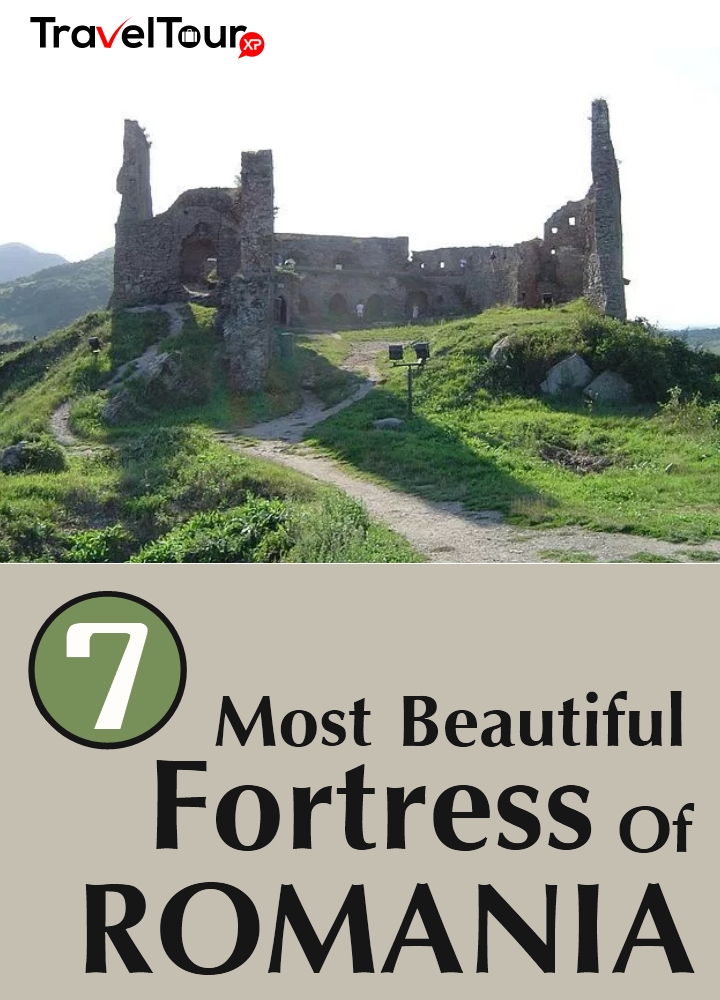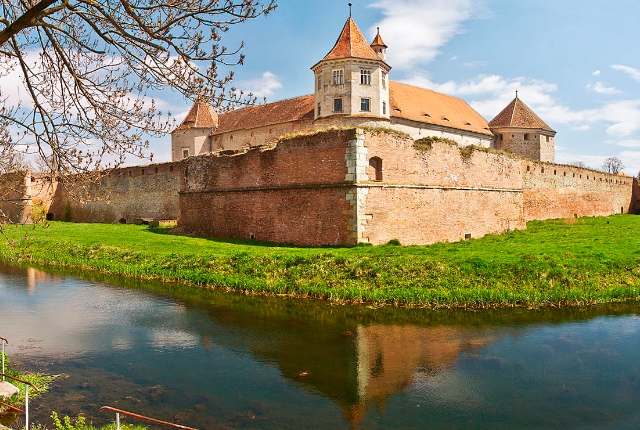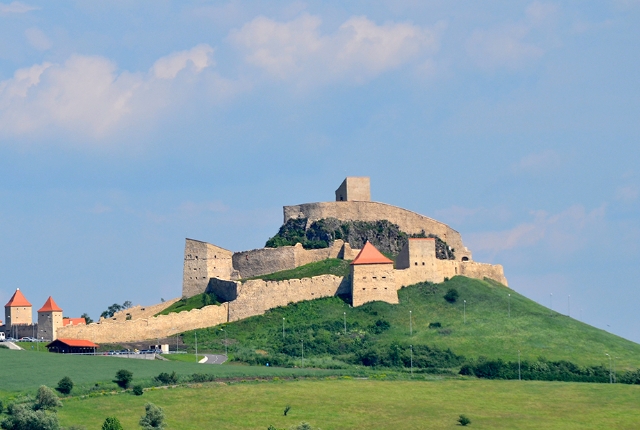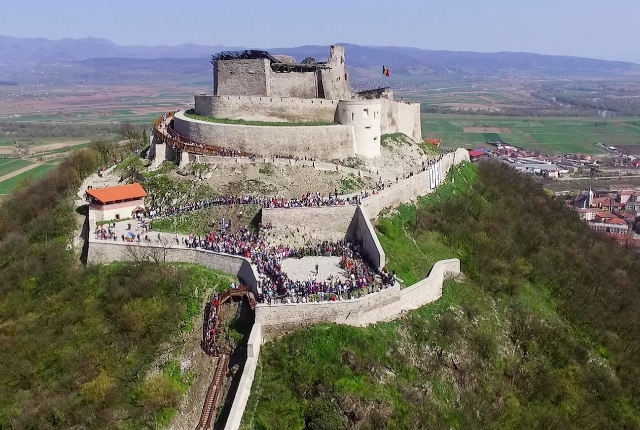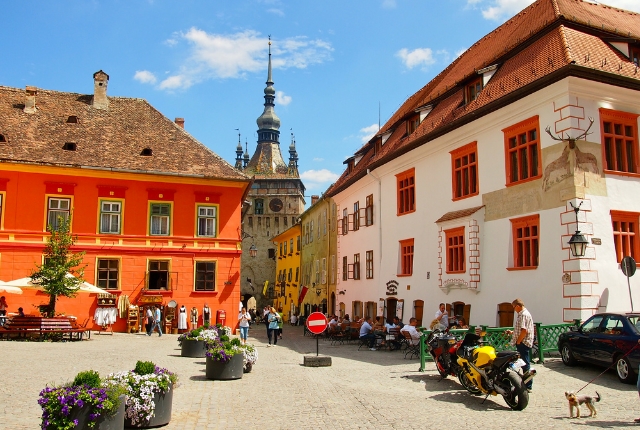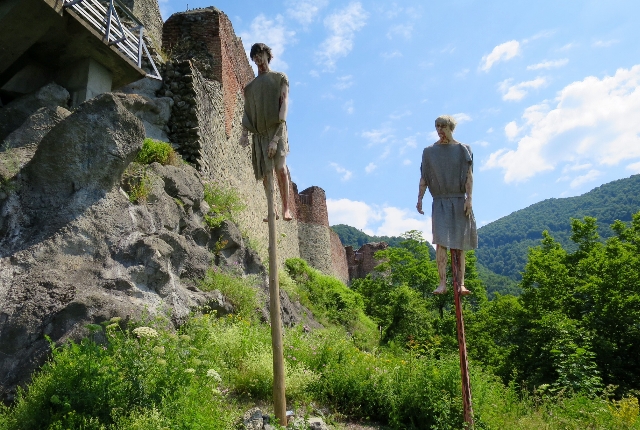Take the help of a local to guide you explore Romania and its most essential fortresses. Check out the evidence of their wild history. Over the centuries, their legacy remains alive. See the most stunning Romanian cities which turned into the major attractions on the traveler map of Romania.
Here Are The Most Significant Fortresses Of Romania:
1. Alba Carolina Fortress
Alba Carolina is known as a symbol of the Alba Iulia city. Alba Iulia is known as the spiritual capital. This is where the unification of present Romania was signed. Made in an elaborate style the fortification used to be critical in the European barrier against the Turkish invaders.
Luxuriously embellished, beautifully emblazoned, beautified with statues and unique components, the doors are special in European military design.
It is a stunning piece of architecture which captures every tourists’ heart with its historic climate and glorious structure. The structure was made between 1715-1738. Austrians established the fortress to protect themselves against Ottomans’ and to stiffen their dominance. The construction is in the “Vauban” form, formation of a star with seven corners.
2. Fagaras Fortress
Center of one of the largest kingdoms in Transylvania, the fortification was a prime home of huge significance in 16th and 17th centuries. The structure was a political point, located between Sibiu and Brasov. It is the only citadel which has never been vanquished by rivals. Through all the different possessions, its work shifted. In the sixteenth century, it shielded the ruler’s family and the national fortune.
Later it got to be home for the Transylvanian authority and after that army jail.
For a brief time-frame, it was used as an Episcopal home and lately, as a prison for socialist dissenters. The nobles of Transylvania applied it in the brawl for the throne. The military defense was helped by its great walls. However, over the years, it got some renovation works that promoted its charm and dignity. If you go to Romania, ensure to take a walk through the Transylvanian mansions. While some of them are renowned in Europe, others are unseen jewels, however, they are equally great.
3. Rupea Fortress
When you visit Brasov, you will find one of the most historic places in Romania. It is made from the remains of a Dacian fort. It is an astonishing presence noticed from a distant place. Rupea Fortress worked as a defense network.
The remains of the Rupea Castle stays on an old fortification created by the Dacians and later vanquished by Romans.
It had defense purposes, working as a shelter for the Saxons amid Turkish intrusions and later the torment epidemic. Although it is now destroyed, the fortification still dominates the scene from the highest point of the slope it was based on. It played a vital part as a major connection between Moldavia, Transylvania, and Wallachia. Every month, over 10.000 tourists come by.
4. Rasnov Fortress
Proceed with the visit in the heart of Transylvania. Rasnov is the oldest structures that exist from the 14th century. Built on a rough slope, encompassed by timberland in southern Rasnov, Rasnov Fortress was created by locals. It is a notable landmark with a basic architectonic form which secured the people against Turkish and Tatar mistreatment.
Built of stone and block, the walls are 5m high and 1.5 m wide and the fortress is made out of two courts.
Rasnov is a well preserved and reestablished citadel in Transylvania. Created around the 13th century, it served as a safe house in times of war for the villagers around. Because of their position on the course of the attacking armed forces, asylum into the Rasnov Citadel was their lone opportunity to survive. Presently it is ruined, however, a portion of the walls still stand. You can observe the sanctuary, the school and the 30m profound well, where people trust lies an unseen treasure.
5. The Fortress of Deva
Deva fortress was once one the most significant medieval palaces in Transylvania. This citadel is discovered in the city of Deva, Hunedoara County. It is located on the highest point of a volcanic slope. A medieval landmark of worldly structure, it is dated starting with the 13th century.
Rulers of fairies and women with hair created of gold that possessed the area encompassed the fortress of Deva.
Constructed not just for military purposes and perception points, the Deva fortification needed to be used as a home. The ruins can be seen from far away, because of its key position. It’s been claimed and led by rulers, dukes, duchesses or counts, it’s been vanquished, sold and obliterated. However, some of its walls still opposed the progression of time.
6. Sighisoara Citadel
Sighisoara Citadel is the old notable center of the Sighisoara city. Since 1999 the UNESCO secured landmark city. Sighisoara Citadel was made in 1280, encompassed by a wall of 930 m, 4 m height, which was raised to 14 m. The towers worked as headquarters of different art societies, which were set up in the city in the 14th century.
>As you venture through the doors of the Sighisoara Medieval fortification, the cleared back roads and the credible design will drag you into a superb adventure through the past.
The stunningly embellished churches and strange squares still radiate a legendary, medieval vibe. The citadel is incredibly well protected. 9 out of 14 towers of the fortification still remain, alongside other imperative structures like Vlad Dracula’s home or the church on the slope.
7. Poenari Fortress
This tour travel around the citadel closes with an acclaimed structure of Poenari Fortress, on Mount City. It is also called Poenari Citadel, the home of Vlad the Impaler, the cruel leader dreaded by numerous people. Made in the 13th century in Arges County, a steep peak during the beech woods, this memorable landmark represents an important piece of Romania. It is believed that Poenari Fortress is Dracula’s own Castle.
With a defensive network, solid fortifications and the rules encompassing the stunning landmark, thousands of visitors get attracted every year.
Situated at a height of 850 meters, the street to the city is a difficult one, made up of 1,480 solid strides. Poenari was the primary asylum from the Ottoman leader Vlad Tepes. The destroyed fortification was once one of the primary citadels used by Vlad the Impaler. Based on a cliff, it was difficult to vanquish because of its area and size. The ruler says that Vlad the Impaler resigned here after deceiving the Turks. After his demise, other Wallachian rulers used it, however, it was demolished by a quake in the 19th century.
Explore the historic Transylvania. Take a walk through the fortresses to go into the rich Roman history. Your travel experience will be memorable as you will find about the largest fortresses of Romania!

